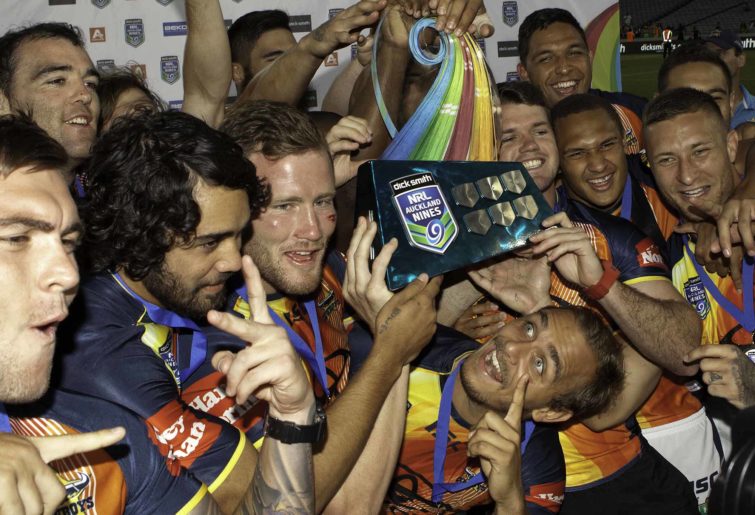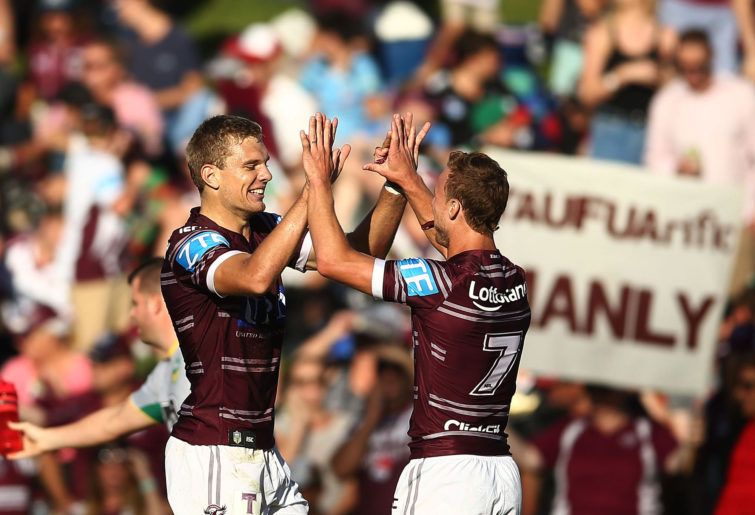JWH put on report for flattening Christian Welch with late shot... which Joey said was 'simultaneous'
It only took seven minutes for star Chooks prop Jared Waerea-Hargreaves to go into the book against Melbourne.
On Saturday night, I found myself in the Ballsbridge area of Dublin.
If you know Dublin at all, you’ll know that Ballsbridge is considered quite well-to-do and that it is the location of Aviva Stadium, home of the very successful Irish rugby union team.
And if you know rugby union, you’ll know that on Saturday night it would have been heaving with fans after an Ireland-Italy World Cup warm-up.
While supping on the black stuff, I met a lovely pair of retired ladies who were about to support Ireland in Japan
Now, if you’ve read this column before you can probably predict what I’m going to say next: why don’t we package up our World Cup warm-ups the way they do? In Europe, anyway, the 15-a-side World Cup warm-ups are a cohesive thing – there are posters outside pubs saying ‘come and see the World Cup warm-ups here’.
It seems sensible that try our own small, modest version of the concept two years from now.
And, if you’ve been a reader for some time, you’ll now expect me to go onto one my other rants about pre-season NRL and Super League games also being sponsor-able and broadcast-able and how our wonderful athletes shouldn’t cross a sideline without the event being commercially leveraged.
One of my hobby horses, that one. Yawn.
But there’s another layer – maybe two – to this discussion.
The obvious retort to my suggestions above is that events aren’t big enough. Last World Cup, the United States beat France and Italy beat England in the prelims (not qualifiers – friendlies immediately before the tournament) but they were in front of small crowds, not 30,000 people at flash stadia.
Most Super League regular season games aren’t televised so it’s jumping the gun to suggest pre-season friendlies should be.
And the NRL, in concert with existing broadcasters, have their pre-season nailed down. Perhaps it could be sold to sponsors – the Downer Pre-season perhaps – but from a broadcast point of view it’s well in-hand.
And then there are business and commercial concerns that we members of the public never have to think about.
Perhaps the NRL would rather sell another pre-season property to Downer or someone else and by creating a new property that would be cheaper, they would undercut themselves.
Channel Ten probably wouldn’t show the NRL pre-season for free because they’d just be convincing viewers to watch Nine for the rest of the year. If a streaming service used Optus, anyone involved in Australian rugby league might be contractually required to stay away because of the sport’s relationship with Telstra.
It’s a sad fact of life as a sports fan that it often makes as much commercial sense to stop you watching something as it does to facilitate your viewership.

Could pre-season fixtures get their own following? (AAP Image/SNPA, Teaukura Moetaua)
Sky in the UK have access to 13 games a weekend – all of Super League and the Championship – but only choose to show two or three. Yet if someone else came along and wanted to produce another game, that production would automatically belong to Sky and they could stop it happening at all.
They don’t have to pay for Wolfpack games – they already owned the Championship but just chose not to show it. So when the club comes along and produces it for them, Sky automatically own that content already.
In the real world of broadcasting, it’s not a case of “how do we get this game to the viewer?”
It’s “how do we make money from this telecast and not break an existing contract?”. Many times, you can do the former but not the latter – so the game is never shown.
But I often wonder if there is yet another factor at play, beyond rugby league not being popular and lucrative enough yet (“we’ll get there eventually”) and complicated and restrictive contracts.
I wonder if, as a game which pitches itself below the top demographics in society, that the bar of “commercial viability” is set higher.
When you’re not getting Mercedes and Qantas and Chivas Regal on board because market research says those companies’ potential customers don’t like league, your options for producing content and staging events are reduced. If one of them wanted to sponsor a World Cup warm-ups series (hell, play a whole weekend of games at stadium in Asia or the Middle East), then that series could happen.
If it’s Bunnings and Bachelors Mushy Peas, the event does not happen.
And I also wonder whether Australia’s dominance of rugby league culture also retards this natural evolution of commercial opportunities, that some things might not happen “eventually” because of this unique situation.
Australia is the sport’s biggest media market. In Australia, international league properties are growing but small because of a widespread belief that the domestic product is superior.
Using the World Cup warm-ups as an example again, if you have a 24-hour station covering another sport – anywhere in the world – it is inconceivable they would not even be interested in showing such matches.

In Australia, the NRL rather than international league dominates. (Photo by Mark Metcalfe/Getty Images)
But it is conceivable – it may not be right in the fullness of time, but you can imagine it – that Fox League might not be terribly keen on showing international league trials because international league is perceived in Australia to be second class.
And if you can’t rely on your best-resourced media market to invest in internationals, you are at the same disadvantage that you find yourself by not having premium brands wanting to sponsor you.
So the rules don’t apply equally across all sports based purely on numbers of eyeballs.
History, culture, geography and demographics play a significant role and unfortunately for rugby league, it finds itself on the wrong side of a lot of these equations.